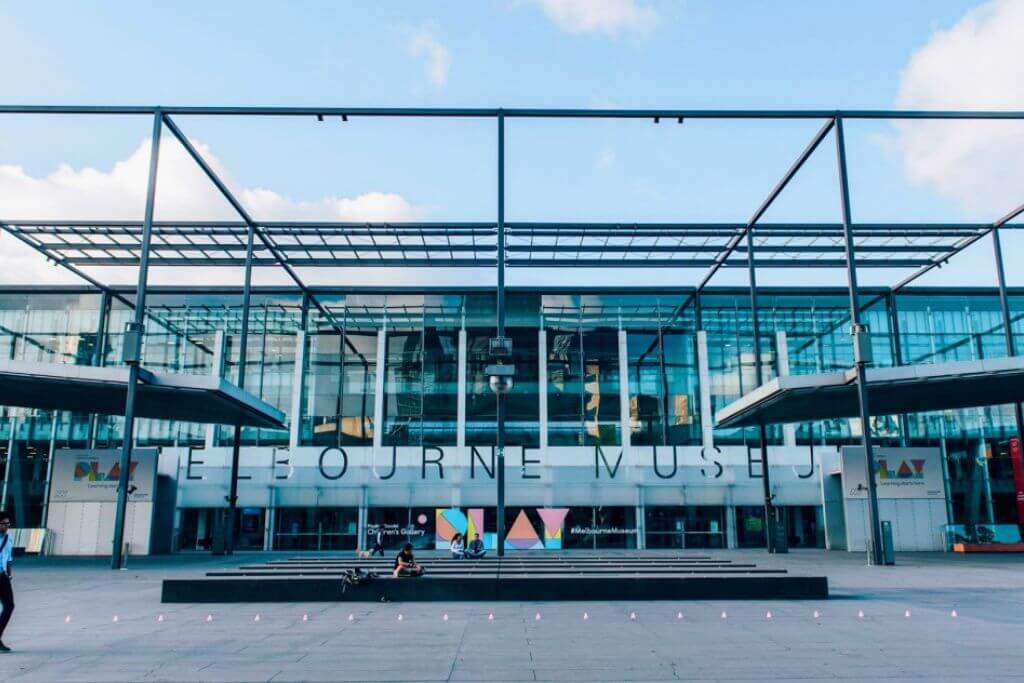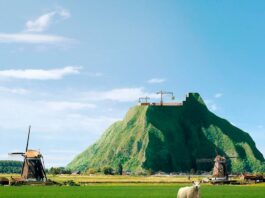The top museums in Melbourne are among the best in Australia, which should come as no surprise given that Melbourne is known as Australia’s cultural center.
1. Why should you visit museums in Melbourne?
There are museums devoted to creative sectors and museums that tell the unique tale of Melbourne’s multiculturalism, from historical heritage to thought-provoking art.
If you’re new to the area, exploring Melbourne’s museums is a great opportunity to learn more about the city. Even if you believe you know the city well, Melbourne’s museums will always surprise you with something new, and they just might change the way you perceive a certain aspect of its culture.
Whatever your interests, you’ll be able to find something in at least one of the museums in Melbourne to make the trip worthwhile. It’s nice to know that several of Melbourne’s top museums are also free to visit.
2. Top Museums In Melbourne
National Gallery of Victoria: Australia’s most popular art museum

Australia’s oldest, biggest, and most popular art museum is the National Gallery of Victoria.
More than 70,000 works of art from thousands of years and a wide variety of styles and disciplines are housed in the NGV. There are well-known European artists, including Rembrandt, Picasso, Cézanne, and Monet. However, the collection of Asian art is very noteworthy.
The NGV’s collection of Australian art, however, is what you would anticipate being most notable. It is situated in the Ian Potter Centre, a unique structure at Federation Square, which is 10 minute walk from the main structure on St. Kilda Road that houses worldwide artworks.
Although admission to the NGV is free, some special exhibitions require a fee. Its central location makes stopping over to take a look around simple.
Melbourne Museum

Melbourne Museum is a magnificent, expansive place with thematic exhibits, interactive spaces, IMAX theaters, postmodern art, and gardens that treat both first-time and recurring visitors equally.
Bunjilaka Aboriginal Cultural Centre

In order to enable Aboriginal people to interpret their own cultural legacy for both Indigenous and non-Indigenous people, Bunjilaka, a space within Melbourne Museum, was created. Indigenous Australian cultures are also celebrated here through exhibitions of artwork, storytelling ceremonies, and traditional performances.
Heide Museum of Modern Art in Melbourne

The Heide Museum of Modern Art is another gallery that is a kind of house within a house. Although new structures for the gallery have subsequently been built on the site, it was previously the residence of art supporters John and Sunday Reed.
John and Sunday invited modern artists into their home when they first moved in here in 1934, fostering an intellectual atmosphere. Sidney Nolan and Albert Tucker, among them, would go on to become some of the nation’s most well-known artists.
The artwork you’ll discover here was gathered over a period of around 40 years and is some of the best of the era. However, there are also frequent temporary displays. The site’s gardens also contain some intriguing pieces of art.
Scienceworks: Amazing place for children

Children may learn about science via hands-on experiences at this interactive science and technology museum. Every day there are special events, guided tours, and varying exhibitions. The Planetarium, with its enormous domed roof that mimics the night sky, is constantly very popular. Social scripts and maps of the museum’s high and low sensory sections are available on the Scienceworks website, and the organization also aids visitors with sensory problems.
National Sports Museum

Bradman’s oversized green hat. The Melbourne Cup collection of Bart Cummings. The swift outfit was worn by Cathy Freeman during her Sydney 2000 gold-medal-winning race. When you visit the National Sports Museum, you can get a close-up look at these objects, which are more than just pieces of sporting memorabilia; they are important markers in the creation of the American identity.
Chinese Museum in Melbourne

The Chinese Museum is situated in the heart of Melbourne’s Chinatown. It has five floors, including a tourist center, a gallery that showcases three generations of Chinese dragons, and an underground experience called “Finding Gold.”
Don’t miss Immigration Museum

This intriguing Melbourne museum tells the true tales of those who immigrated to Victoria using first-person experiences, real-life pictures, and artifacts. It is located inside a superbly preserved structure that also served as Melbourne’s Customs House and the entryway to the nascent colony between 1858 and 1870.
Jewish Museum of Australia

This museum explores the emotional and inspirational stories of Melbourne and Australia’s Jewish community from the earliest days of European settlement through interactive displays, cherished artifacts, and a diverse schedule of educational programs. In a specific section of the museum devoted to Holocaust history, survivors tell their memories. Elsewhere, you may discover reputable modern art exhibitions and displays, as well as celebrations of the many festivals and holy days that Judaism observes.
Hellenic Museum: Learn about Greek history

Despite the Hellenic Museum’s youth, Melbourne has a long history of Greek ancestry. Additionally, the artifacts on show at the stunning Hellenic Museum date all the way back. We’re talking 600 BC Corinthian Gobulars here. You won’t find these amazing windows into another era anywhere else in Melbourne, at least not in ongoing exhibits.
Find more about the earliest Greek immigrants to Australia, some of whom came as convicts, pioneers, and gold seekers, as well as others who came as part of the Australian Government’s migration program in the 1950s and 1960s.
Australian Centre for the Moving Image (ACMI)

After undergoing a $40 million renovation and reopening in early 2021, I believe ACMI is among the top museums in Melbourne.
It traces the development of the moving image from its earliest forms—shadow puppets, for example—all the way up to the present day, which includes video games and art installations. Despite the international influences, there is undoubtedly a strong emphasis on Australian cinema.
The collection’s interactive features and the ability to save and subsequently review your favorite stories online set it apart from other collections. You may spend quite a few hours here because there is so much to see.



